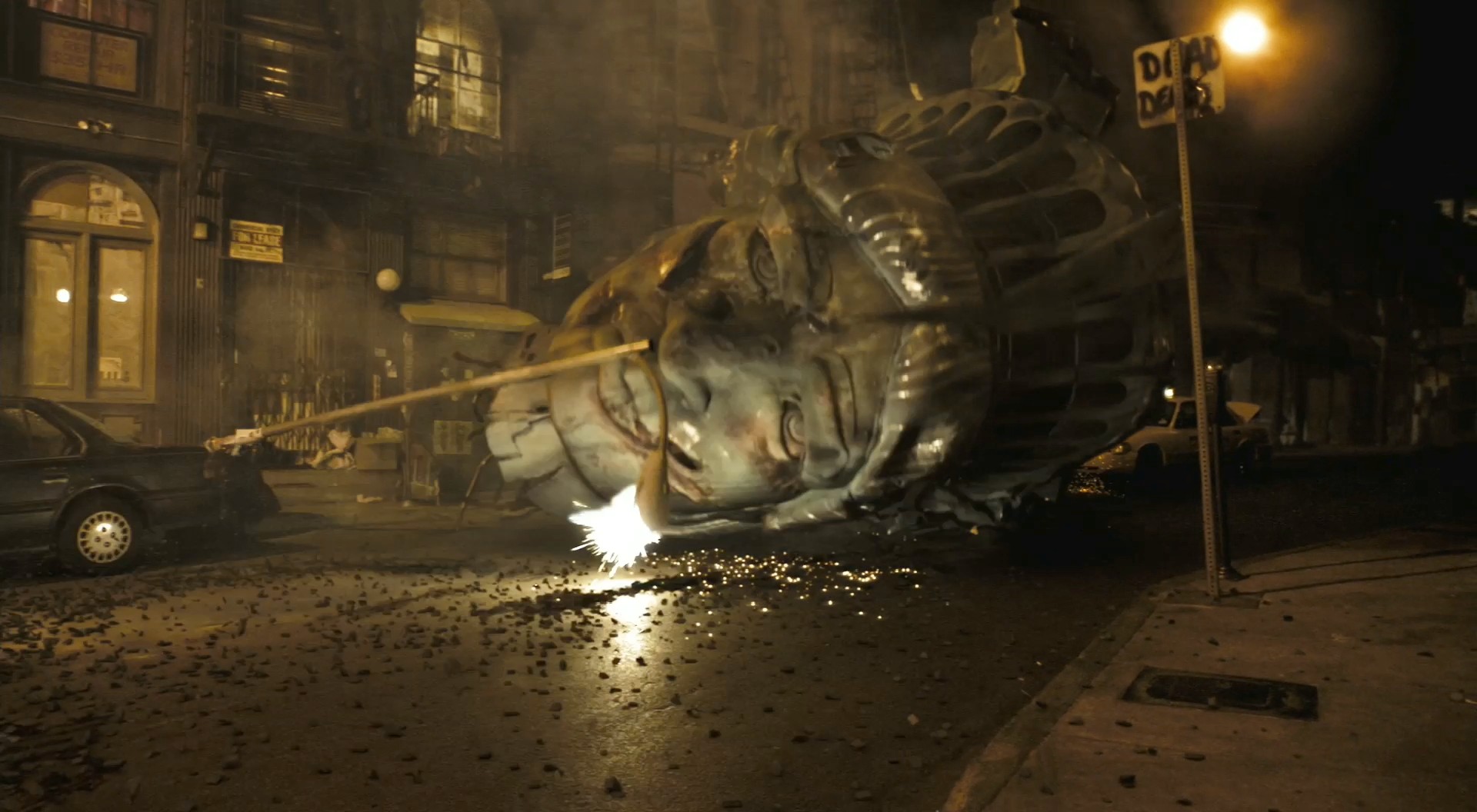
Cloverfield (Matt Reeves, 2008, 85 min.)
A giant leap forward from The Blair Witch Project‘s found footage conceit, Cloverfield asks the audience to accept only three things: (1) that someone would lug a video camera around for 90 minutes in the middle of an alien invasion, (2) that the camera includes some kind of storage device that holds more footage than a standard 60-minute DV tape, and (3) that, in the face of a citywide attack by a gigantic killer monster from outer space, three people would run toward it instead of away from it. Viewers willing to accept those three things and resistant to the seasickness that the film’s hyper-shaky-cam induces in some people will be blown away by one of the most exciting and frightening sci-fi/horror films of the last decade.
When a giant monster attacks Manhattan during his going-away party, Jason (Mike Vogel) puts off his impending trip to Tokyo to run uptown, his brother Rob (Michael Stahl-David), his friend Hud (T.J. Miller), Rob’s girlfriend Lily (Jessica Lucas), and the shell-shocked Marlena (Lizzy Caplan) in tow, in search of his best friend Beth (Odette Yustman), to do a combination of things: (1) apologize for sleeping with her and then disappearing, (2) tell her he loves her, and (3) maybe save her from the giant monster. The latter looks increasingly unlikely as the true extent of the chaos emerges. Hud insists on lugging along the video camera he was using to record testimonials at the party; “People are going to want to know what happened,” he explains uncertainly.
Although the first assumption of some characters is that the explosions and screaming they can barely make out are the result of another terrorist attack, the film shouldn’t be considered as obvious a political allegory as, say, Gojira, whose A-bomb = monster equation is reinforced throughout the film. The attacks of September 11 inform the characters’ first reactions, but they’re quickly dropped; one could read the military and government’s reactions as either effective or ineffective, and the film seems to purposefully avoid easy parallels, aside from the inevitable echoes of falling buildings and people running through lower Manhattan.
The actors are capable, if unremarkable: the situation calls for believable reactions to unbelievable events, and the actors sell the conceit. One could argue that the opening sequence, before the fireworks start, goes on a bit too long, and I’ll admit that they’re not the most interesting people around. But that’s almost the point: they’re completely average, and they basically serve as our guide through the nightmare; because they’re semi-entities, we can imagine ourselves in the situation, and the convenient first-person camera helps cement our connection to the events onscreen. The most interesting character is Hud, whom we seldom see. His insistence on recording, which the others disparage, might be his generally annoying personality—he’s the kind of inexplicable but realistic best friend who tends to annoy everyone else in the room—but it might be his way of feeling like he’s doing something in a situation where utter helplessness reigns. Jason’s helplessness propels his Quixotic quest to rescue his friend; the others are there so they won’t have to be alone. The real stars are the visual effects—which, perhaps aided by the intentionally amateurish look of the film, are among the most convincing digital effects of all time—and the conceit.
A colleague called it “the most aesthetically rigorous film I’ve ever seen,” and I can’t improve on that assessment. It never, not even for an instant, strays from its mission: unlike George Romero’s recent Diary of the Dead, which talks its way around some concessions to dramatics (“I added music to make it scarier”) and hopes you won’t notice others (early-film cuts without breaks in the sound, despite the presence of only one camera and one microphone), Cloverfield simply refuses to be anything except a grainy, sometimes washed-out, shaky-as-hell video document of an alien invasion, shot by a single camera held by a non-professional and found in the rubble in the aftermath. That’s it: there’s no music, no cutting, and no cheating. By itself, that’s among the greatest achievements in the cinema of the last few years. That it comes packaged in a peerless thriller is just a bonus.

